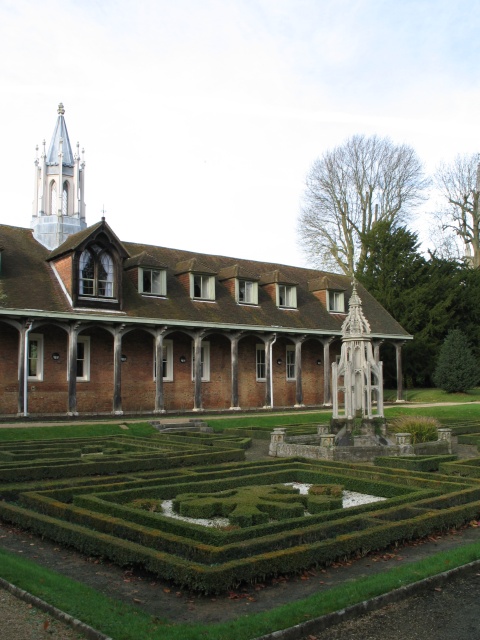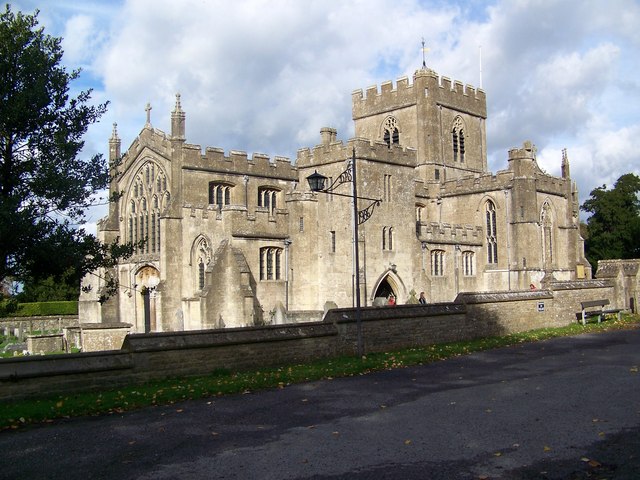|
Bonhommes
The name Boni Homines ('Good men' in Latin) or Bonshommes (the same in French) was popularly given to at least three religious orders in the Catholic Church: Grandmontines The Order of Grandmont, were an austere order founded by St. Stephen of Muret. By the end of the twelfth century they had more than sixty monasteries, principally in Acquitaine, Anjou and Normandy. The rules of the order were relaxed to a great extent after 1643. In the Eighteenth Century they had three convents of nuns. The order was suppressed in the French Revolution. The Fratres Saccati, or Brothers of Penitence The Fratres Saccati, or Brothers of Penitence, were an order that were active in Spain, France and England. It is said that they controlled Ashridge Priory and Edington Priory in England, but this has been completely repudiated in an article by Richard Emory in the journal ''Speculum'' (1943), who attributes the original connection to Helyot's ''Dictionnaire des Ordres Religieux'', which w ... [...More Info...] [...Related Items...] OR: [Wikipedia] [Google] [Baidu] |
Ashridge Priory
Ashridge Priory was a medieval college of Austin canons called variously the "Brothers of Penitence" or the "Boni Homines". It was founded by Edmund of Almain in 1283 who donated, among other things, a phial of Christ's blood to the abbey. It was granted to Mary Tudor, Queen of France and later became the private residence of the future queen Elizabeth I. It was acquired by Sir Thomas Egerton in 1604 and then passed down to the Duke of Bridgewater before being demolished. History In 1283 Edmund, son of Richard, Earl of Cornwall holders of Berkhamsted Castle (two and half miles away) founded a monastery at Ashridge, Hertfordshire. The monastery was built for a rector and twenty canons who formed, according to the sixteenth-century historian Polydore Vergil, "a new order not before seen in England, and called the Boni homines". At the foundation of the abbey Edmund, 2nd Earl of Cornwall donated, among other things, a phial of Christ's blood. This relic was perhaps not so well k ... [...More Info...] [...Related Items...] OR: [Wikipedia] [Google] [Baidu] |
Edington Priory
Edington Priory in Wiltshire, England, was founded by William Edington, the bishop of Winchester, in 1351 in his home village of Edington, about east of the town of Westbury. The priory church was consecrated in 1361 and continues in use as the parish church of Saint Mary, Saint Katharine and All Saints. History Early history When Edington was recorded in Domesday Book of 1086 it was held by Romsey Abbey. The nuns of Romsey provided a church for their tenants at Edington. Remains of a late-Norman church were found during restoration in the 19th century. North Bradley was a chapelry of Edington at this time. William Edington William Edington (d. 1366), from an Edington family, became Treasurer of England and bishop of Winchester, and founded a college of chantry priests at Edington in 1351 in order to have prayers said for himself, his parents and his brother. The church was transferred from Romsey to the chantry, and William gave further funds and properties in the follow ... [...More Info...] [...Related Items...] OR: [Wikipedia] [Google] [Baidu] |
Pierre Helyot
Pierre is a masculine given name. It is a French form of the name Peter. Pierre originally meant "rock" or "stone" in French (derived from the Greek word πέτρος (''petros'') meaning "stone, rock", via Latin "petra"). It is a translation of Aramaic כיפא (''Kefa),'' the nickname Jesus gave to apostle Simon Bar-Jona, referred in English as Saint Peter. Pierre is also found as a surname. People with the given name * Abbé Pierre, Henri Marie Joseph Grouès (1912–2007), French Catholic priest who founded the Emmaus Movement * Monsieur Pierre, Pierre Jean Philippe Zurcher-Margolle (c. 1890–1963), French ballroom dancer and dance teacher * Pierre (footballer), Lucas Pierre Santos Oliveira (born 1982), Brazilian footballer * Pierre, Baron of Beauvau (c. 1380–1453) * Pierre, Duke of Penthièvre (1845–1919) * Pierre, marquis de Fayet (died 1737), French naval commander and Governor General of Saint-Domingue * Prince Pierre, Duke of Valentinois (1895–1964), father ... [...More Info...] [...Related Items...] OR: [Wikipedia] [Google] [Baidu] |
Catholic Encyclopedia
The ''Catholic Encyclopedia: An International Work of Reference on the Constitution, Doctrine, Discipline, and History of the Catholic Church'' (also referred to as the ''Old Catholic Encyclopedia'' and the ''Original Catholic Encyclopedia'') is an English-language encyclopedia published in the United States and designed to serve the Catholic Church. The first volume appeared in March 1907 and the last three volumes appeared in 1912, followed by a master index volume in 1914 and later supplementary volumes. It was designed "to give its readers full and authoritative information on the entire cycle of Catholic interests, action and doctrine". The ''Catholic Encyclopedia'' was published by the Robert Appleton Company (RAC), a publishing company incorporated at New York in February 1905 for the express purpose of publishing the encyclopedia. The five members of the encyclopedia's Editorial Board also served as the directors of the company. In 1912 the company's name was changed to ... [...More Info...] [...Related Items...] OR: [Wikipedia] [Google] [Baidu] |
French Revolution
The French Revolution ( ) was a period of radical political and societal change in France that began with the Estates General of 1789 and ended with the formation of the French Consulate in November 1799. Many of its ideas are considered fundamental principles of liberal democracy, while phrases like ''liberté, égalité, fraternité'' reappeared in other revolts, such as the 1917 Russian Revolution, and inspired campaigns for the abolition of slavery and universal suffrage. The values and institutions it created dominate French politics to this day. Its causes are generally agreed to be a combination of social, political and economic factors, which the ''Ancien Régime'' proved unable to manage. In May 1789, widespread social distress led to the convocation of the Estates General, which was converted into a National Assembly in June. Continuing unrest culminated in the Storming of the Bastille on 14 July, which led to a series of radical measures by the Assembly, i ... [...More Info...] [...Related Items...] OR: [Wikipedia] [Google] [Baidu] |
John De Vicenza
John is a common English name and surname: * John (given name) * John (surname) John may also refer to: New Testament Works * Gospel of John, a title often shortened to John * First Epistle of John, often shortened to 1 John * Second Epistle of John, often shortened to 2 John * Third Epistle of John, often shortened to 3 John People * John the Baptist (died c. AD 30), regarded as a prophet and the forerunner of Jesus Christ * John the Apostle (lived c. AD 30), one of the twelve apostles of Jesus * John the Evangelist, assigned author of the Fourth Gospel, once identified with the Apostle * John of Patmos, also known as John the Divine or John the Revelator, the author of the Book of Revelation, once identified with the Apostle * John the Presbyter, a figure either identified with or distinguished from the Apostle, the Evangelist and John of Patmos Other people with the given name Religious figures * John, father of Andrew the Apostle and Saint Peter * Pope J ... [...More Info...] [...Related Items...] OR: [Wikipedia] [Google] [Baidu] |
Pope Martin V
Pope Martin V ( la, Martinus V; it, Martino V; January/February 1369 – 20 February 1431), born Otto (or Oddone) Colonna, was the head of the Catholic Church and ruler of the Papal States from 11 November 1417 to his death in February 1431. His election effectively ended the Western Schism of 1378–1417. He is the last pope to date to take on the pontifical name "Martin". Biography Oddone Colonna was born at Genazzano, the son of Agapito Colonna and Caterina Conti, between 26 January and 20 February, 1369. He belonged to one of the oldest and most distinguished families of Rome. His brother Giordano became Prince of Salerno and Duke of Venosa, while his sister Paola was Lady of Piombino between 1441 and 1445. Oddone studied law at the University of Pavia. He became apostolic protonotary under Pope Urban VI (1378–1389), and was created Cardinal-Deacon of San Giorgio in Velabro by Pope Innocent VII in 1405. In 1409 he took part in the Council of Pisa, and was one of the su ... [...More Info...] [...Related Items...] OR: [Wikipedia] [Google] [Baidu] |
Catholic Orders And Societies
The Catholic Church, also known as the Roman Catholic Church, is the largest Christian church, with 1.3 billion baptized Catholics worldwide . It is among the world's oldest and largest international institutions, and has played a prominent role in the history and development of Western civilization.O'Collins, p. v (preface). The church consists of 24 ''sui iuris'' churches, including the Latin Church and 23 Eastern Catholic Churches, which comprise almost 3,500 dioceses and eparchies located around the world. The pope, who is the bishop of Rome, is the chief pastor of the church. The bishopric of Rome, known as the Holy See, is the central governing authority of the church. The administrative body of the Holy See, the Roman Curia, has its principal offices in Vatican City, a small enclave of the Italian city of Rome, of which the pope is head of state. The core beliefs of Catholicism are found in the Nicene Creed. The Catholic Church teaches that it is the on ... [...More Info...] [...Related Items...] OR: [Wikipedia] [Google] [Baidu] |
Latin Words And Phrases
Latin (, or , ) is a classical language belonging to the Italic branch of the Indo-European languages. Latin was originally a dialect spoken in the lower Tiber area (then known as Latium) around present-day Rome, but through the power of the Roman Republic it became the dominant language in the Italian region and subsequently throughout the Roman Empire. Even after the fall of Western Rome, Latin remained the common language of international communication, science, scholarship and academia in Europe until well into the 18th century, when other regional vernaculars (including its own descendants, the Romance languages) supplanted it in common academic and political usage, and it eventually became a dead language in the modern linguistic definition. Latin is a fusional language, highly inflected language, with three distinct grammatical gender, genders (masculine, feminine, and neuter), six or seven grammatical case, noun cases (nominative, accusative, genitive, dative, ablati ... [...More Info...] [...Related Items...] OR: [Wikipedia] [Google] [Baidu] |




.jpg)
